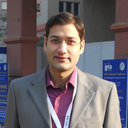Social class and all-cause mortality in an urban population of North India.
Avainsanat
Abstrakti
BACKGROUND
There is a rapid emergence of cardiovascular disease in India with economic development, leading to an increase in mortality due to these diseases. The exact causes of death in India, however, are not known.
METHODS
We studied randomly selected death records from 2222 (1385 men and 837 women) victims, aged 25-64 years, out of 3034 death records during 1999-2001 at the Municipal Corporation, Moradabad. All the families of these victims could be contacted individually to find out the causes of death, by scientists/doctors-administered pre-tested verbal autopsy questionnaires, completed with the help of spouses and local treating doctors practising in the concerned lane. Social classes were assessed by a questionnaire based on attributes of per capita income, occupation, education, housing and ownership of consumer luxury items in the household.
RESULTS
Causes of mortality included infectious diseases (41.1%, n = 915) such as tuberculosis, pneumonia, chronic obstructive pulmonary disease, diarrhea/dysentery, hepatitis B, and inflammatory brain infections as the commonest causes of death in the urban population of North India. The second most common causes of death were circulatory diseases (29.1%, n = 646), including heart attacks (10.0%), strokes (7.8%), valvular heart disease (7.2%, n = 160), sudden cardiac death, and inflammatory cardiac disease (each 2.0%, n = 44). Malignant neoplasm (5.8%, n = 131), injury (14.0%, n = 313), including accidents, fire and falls, and poisonings were also quite common causes of death. Miscellaneous causes of death were noted in 9.1% (n = 202) death records, including diabetes mellitus (2.2%, n = 49), suicides (1.8%, n = 41), congenital anomalies (1.0, n = 37), dental caries infections (1.9, n = 42), and burns (1.3%, n = 33). Pregnancy and perinatal causes (0.72%, n = 15) were not commonly recorded in our study. Circulatory diseases as the cause of mortality were statistically significantly more common among higher social classes (1-3) than in lower social classes (4 and 5) whose members died more often due to infections. Heart attacks, strokes, hypertension, diabetes and obesity were statistically significantly more common among higher social classes (1-3) as compared to classes 3 and 4, but tobacco intake showed only minor differences among various classes.
CONCLUSIONS
This study indicates that circulatory diseases, injury and malignant diseases have become the major causes of death in India, after infections. Members of social classes 1-3 died more often due to circulatory diseases and members in lower social classes died more often due to infections. Urbanization with rapid changes in diet and lifestyle in various social classes, and possibly aging of the population seem to be responsible for the double burden of diseases, related to under- and over-nutrition, causing death in a developing economy. Monitoring of blood pressure and heart rate around the clock for 7 days, with data analysed chronobiologically can detect abnormal circadian patterns associated with a large increase in cardiovascular disease risk, greater than hypertension itself, allowing the institution of prophylactic treatment. Such prehabilitation may be particularly useful to curb the increasing burden of cardiovascular diseases in both developed and developing countries.





